Papers by Julian Garcia-Mayordomo

Tectonics, Dec 1, 2022
Fault slip rate is one of the most crucial parameters to characterize earthquake occurrence in fa... more Fault slip rate is one of the most crucial parameters to characterize earthquake occurrence in fault‐based seismic hazard assessments (SHA). Accordingly, paleoseismic studies have increasingly focused on constraining this parameter in active faults worldwide. We present a comprehensive paleoseismic study in the Alhama de Murcia Fault (AMF), one of the most active faults in SE Spain and source of destructing earthquakes such as the 2011 Mw 5.2 Lorca event. Contrasting with previous studies, we integrate paleoseismic data from four fault strands in the AMF and, based on trench slip analysis and numerical dates, we derive slip rate estimates of each strand over the whole transect and assess their time variability. The AMF has a minimum net slip rate between 1.35+0.16/−0.10 and 1.64+0.16/−0.11 mm/yr for the past 18 ± 1 to 15.2 ± 1.1 ka. These results prove the importance of accounting for the complete sections of a geological structure as they are almost twice the previous estimates for a single fault branch. Slip rate variability is identified in the AMF, with cyclic acceleration‐quiescence patterns that could be related to stress field changes driven by fault interaction or synchronicity with neighboring faults (e.g., Carrascoy). We hope that the data presented here motivates their inclusion into forthcoming fault‐based SHAs. In this regard, limitations related to the lack of paleoseismic data for one fault strand, along with poor characterization of the strike component of slip and insufficient age control of the units for another strand are highlighted and need to be accounted for by modelers.
EGU General Assembly Conference Abstracts, May 1, 2014
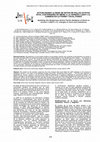
Resumen/resumo: Se presentan a la comunidad científica los principales cambios que conllevará la ... more Resumen/resumo: Se presentan a la comunidad científica los principales cambios que conllevará la actualización a la versión 4 de la base de datos QAFI. El nombre de la base de datos se modifica pasando a ser ÒQuaternary-Active FaultsÉÓ. Se sustituye el término ÒsegmentÓ por ÒsectionÓ. Se omiten las estimaciones automáticas de magnitud máxima y recurrencia. Se amplía la extensión de la base de datos al margen norteafricano. Se creará una nueva base de datos con aquellas fallas cuya actividad en el cuaternario ha quedado descartada en base a evidencias geológicas publicadas. También se exponen diversas mejoras en relación con la visualización de las fallas en la aplicación web, y se solicita colaboración para mejorar la parte de asociaciones con la sismicidad. Finalmente, se prospectan futuras aplicaciones de la QAFI: la clasificación de falla activa del Eurocódigo-8 y una base de datos de fuentes sismogénicas tipo falla.
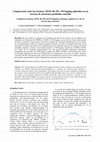
En este estudio se contrastan los resultados que ofrecen dos técnicas de uso habitual en el Labor... more En este estudio se contrastan los resultados que ofrecen dos técnicas de uso habitual en el Laboratorio de Geotecnia del CEDEX, el AEOS y el PS-logging, con los de una técnica relativamente novedosa, el Re-Mi (o sísmica pasiva). Para ello se emplean los resultados obtenidos por las tres técnicas en un emplazamiento común de estructura profunda conocida: un tramo de terraplén ferroviario recién construido. La técnica más precisa en la identificación de las diferentes partes de la estructura de tierras (terraplén, cimiento y contacto con el terreno natural) es el PS-logging, seguido por el AEOS y Re-Mi. Los valores de Vs promedio proporcionados por cada técnica presentan importantes diferencias, obteniéndose los más altos con el PS-logging, seguido por AEOS y Re-Mi. La desviación de los valores Vs promedio obtenidos por una técnica en particular, en comparación con las otras, es similar. Respecto a la técnica Re-Mi, cabe destacar que, si bien no se ha mostrado muy precisa en este estudio, presenta un alto grado de operatividad en cuanto a implantación, ejecución y procesado de datos.
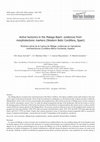
The Malaga Basin is located in the westernmost part of the Betic Cordillera. This alpine cordille... more The Malaga Basin is located in the westernmost part of the Betic Cordillera. This alpine cordillera in the south of Spain is the most active region of the Iberian Peninsula. Some of the most destructive earthquakes occurred historically in Spain took place within the 0DODJD %DVLQ ,Q WKLV ZRUN ZH IRFXV RQ JHRPRUSKLF DQG PRUSKRWHFWRQLF REVHUYDWLRQV LQ WKH DLP RI ¿QGLQJ DFWLYH WHFWRQLF VWUXFWXUHV that could be seismogenic sources. First, we study the spatial arrangement and age of the Quaternary alluvial fan system as well as the drainage pattern of the basin, followed by the analysis of the distribution of regional markers like marine erosive surfaces and the extend of Pliocene marine deposits in the Malaga Basin. The tectonic structures inferred as active by the morphotectonic analysis are grouped into four main families: N60º-85ºE folds associated with blind thrust faults, N20º-30ºE and N40º-50ºE high angle dip-slip faults, and N165º-170ºE tear faults. Finally, their seismic potential in terms of maximum moment magnitude (Mw) is assessed by means of empirical relationships, varying between 6.0 and 7.0 depending on the hypothesis considered..
Journal of Applied Geophysics, 2011
Results obtained by SASW and PS-logging (in-hole) seismic techniques are compared with the relati... more Results obtained by SASW and PS-logging (in-hole) seismic techniques are compared with the relatively new ReMi (Refraction micro tremor) method at a common site with a well-known soil profile: a recently constructed high-speed railway embankment. PS-logging is the most accurate technique in identifying the soil profile of the embankment followed by Re-Mi and SASW. Mean shear wave velocity estimations are also higher for PS-logging, followed by SASW and ReMi, while mean deviation is similar in each technique. The ReMi technique has provided very accurate results in the study of the embankment profile, which in addition to its high operability and its fast data processing, makes it a very convenient technique for extensive geotechnical surveys.
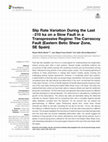
Frontiers in Earth Science, Feb 10, 2021
Fault slip rate variability over time is a crucial aspect for understanding how single faults int... more Fault slip rate variability over time is a crucial aspect for understanding how single faults interact among each other in fault systems. Several studies worldwide evidence the occurrence of high activity periods with clustering of events and synchronization among faults, followed by long periods of low activity (super-cycles). The increasing gathering of evidence of these phenomena is making fault hazard models quickly evolving and challenging seismic hazard assessment. However, in moderately active fault systems, a determination of fault slip rates can present large uncertainties, that have to be carefully considered when slip rate histories are determined. In this work, we estimate the variation of slip rate in the last ∼210 ky of the NE segment of the left-lateral reverse Carrascoy Fault, one of the main faults forming the Eastern Betic Shear Zone in SE Spain. We study two selected field sites where we have been able to measure offsets and date the sediments along with uncertainties. The first site shows a progressive discordance drawn by different calcretes developed on alluvial deposits. The vertical throw is calculated by modeling the growth of the discordance. The vertical slip rates are estimated dating the deformed calcretes by Uranium Series and by comparing them with a complete regional calcrete dates database compiled from the literature. On the second site, we analyze the geomorphology of different Upper Pleistocene alluvial fans, where three incised channels are offset by the fault, providing the net slip for the last ∼124 ky. We discuss the influence of different factors on the estimate of net slip rates using data from different sources. This analysis highlights the importance of determining an accurate fault geometry and how local data can provide misleading deformation rates. Our results suggest the existence of long periods of low activity disturbed by short high activity periods. Such a pattern of activity along time is defined for the first time in the Eastern Betic Shear Zone, with interesting implications in the seismogenic behavior of the rest of the slow faults within the region.

<p>Paleoseismology is a fundamental method to characterize the activity of ... more <p>Paleoseismology is a fundamental method to characterize the activity of faults in low to moderate strain regions such as SE Spain. Among the different parameters to characterize such activity, the slip rate is one of the most crucial for fault-based probabilistic seismic hazard assessments (PSHA) as it controls the rates of earthquake occurrence and ultimately the hazard levels likely to be exceeded in a given time period.</p><p>The Alhama de Murcia Fault (AMF) is the most active structure within the Eastern Betics Shear Zone (EBSZ), a transpressive fault system that accommodates the largest part of the Africa-Eurasia convergence in SE Iberia. The AMF has caused some of the most important earthquakes in the EBSZ since historical times, including the damaging 2011 Mw 5.2 Lorca event. In this setting, paleoseismic studies in the EBSZ have paid special attention to this fault, and particularly to its central segment (Lorca-Totana) as this is one of the most geomorphologically prominent.  Despite this, the segment comprises a wide deformation zone where the fault splays into five subparallel slip-partitioned branches, four of these still unstudied to date. We present a comprehensive paleoseismic study that integrates paleoseismic data from four out of the five branches that compose the segment. Our aim is to improve the representativeness of the geological slip rates by accounting for a nearly complete transect of the fault zone: we excavated eight new trenches across the four branches including seven fault-perpendicular and one parallel trench to measure vertical and lateral displacements, respectively. Fault slip analysis combined with OSL and radiocarbon dating allowed the calculation of slip rates for each branch and for the whole transect, as well as their variability over time.</p><p>A total net slip rate of 1.60 +0.16/-0.11 mm/yr for the past 18-15 ka is obtained, which is almost twice the previous estimations from a single fault branch (0.9±0.1 mm/yr). This points out the relevance of accounting for all structures of a fault zone for a more reliable characterization. The slip rate variability analysis depicts cyclic patterns of short slip rate accelerations followed by longer quiescence periods, some of which are interestingly similar to those identified in the neighboring Carrascoy Fault in previous studies. This may, for the first time, suggest potentially synchronous activity among faults in Iberia. The present study is therefore an important step to improve the representativeness of the slip rate estimations in the AMF, and ultimately for subsequent PSHA studies in the area. Despite this, two main challenges still need to be assessed; first, the intermittent deposition of alluvium in the area makes it difficult to have correlative time periods between sites to integrate slip rates. Second, the lack of data in one of the five fault branches and the lack of detailed 3D trenching in most branches suggests that the obtained slip rate values could be a minimum. In this sense, integrating data from new paleoseismic sites and refining the existing data would likely allow to refine the current estimations and potentially fill the present knowledge gaps.</p>
Computers & Geosciences, May 1, 2005

Natural Hazards and Earth System Sciences, Aug 30, 2017
Active fault databases are a very powerful and useful tool in seismic hazard assessment, particul... more Active fault databases are a very powerful and useful tool in seismic hazard assessment, particularly when singular faults are considered seismogenic sources. Active fault databases are also a very relevant source of information for earth scientists, earthquake engineers and even teachers or journalists. Hence, active fault databases should be updated and thoroughly reviewed on a regular basis in order to keep a standard quality and uniformed criteria. Desirably, active fault databases should somehow indicate the quality of the geological data and, particularly, the reliability attributed to crucial fault-seismic parameters, such as maximum magnitude and recurrence interval. In this paper we explain how we tackled these issues during the process of updating and reviewing the Quaternary Active Fault Database of Iberia (QAFI) to its current version 3. We devote particular attention to describing the scheme devised for classifying the quality and representativeness of the geological evidence of Quaternary activity and the accuracy of the slip rate estimation in the database. Subsequently, we use this information as input for a straightforward rating of the level of reliability of maximum magnitude and recurrence interval fault seismic parameters. We conclude that QAFI v.3 is a much better database than version 2 either for proper use in seismic hazard applications or as an informative source for non-specialized users. However, we already envision new improvements for a future update.
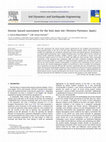
Soil Dynamics and Earthquake Engineering, Jul 1, 2011
This work summarises the seismic hazard analysis performed for the complete characterisation of s... more This work summarises the seismic hazard analysis performed for the complete characterisation of strong ground-motion at the site of the Itoiz dam (Western Pyrenees, Spain). The hazard analysis includes the compilation of a composite catalogue from French and Spanish agencies, the definition of an original hybrid seismogenic source model (including zones and major faults) and the selection of ground motion prediction equations (GMPEs). Hazard results are provided as hazard curves and acceleration response spectra on rock for the 1000-and 5000-year return periods, which correspond respectively to the operating basis earthquake (OBE) and safety evaluation earthquake (SEE). The impact of truncating GMPEs at a number of standard deviations (epsilon) has been found not critical here for the return periods targeted. Subsequently, an analysis of the contribution of each source to total hazard and a hazard disaggregation analysis are performed in order to establish the earthquakesource parameters for both the OBE and SEE scenarios consistently with the seismotectonics of the region. The European Strong Motion database is then searched and a selection of records is proposed for each of the scenarios. Our results suggest that seismic hazard in the region is underestimated by the official Spanish seismic hazard map included in the current version of the code (NCSE-02), which is the reference document for the definition of seismic actions for dam projects in the whole Pyrenees.
EGU General Assembly Conference Abstracts, May 1, 2014
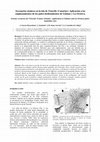
El objetivo de este trabajo es proveer las bases adecuadas para considerar el factor sísmico en u... more El objetivo de este trabajo es proveer las bases adecuadas para considerar el factor sísmico en un análisis retrospectivo de la estabilidad de los grandes paleo-deslizamientos de Güímar y La Orotava (Tenerife). En primer lugar, se calcula la peligrosidad sísmica en ambos emplazamientos en términos de aceleración máxima horizontal y se analiza la contribución particular de las fuentes sismogénicas a la peligrosidad total. En segundo lugar, se realiza un análisis de desagregación y se analiza la contribución parcial a la peligrosidad total por pares magnitud-distancia. En base a los resultados obtenidos se proponen tres escenarios sísmicos diferentes para cada emplazamiento, cada uno definido por un terremoto de magnitud, distancia y origen tectónico/volcánico dado. Los resultados obtenidos del cálculo de la peligrosidad pueden ser empleados en un análisis de estabilidad pseudoestático simple. Para un análisis dinámico complejo la selección de acelerogramas reales puede realizarse de acuerdo a los escenarios propuestos en este trabajo.
Bulletin of Earthquake Engineering, Aug 31, 2013
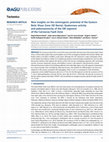
Tectonics, 2016
The Carrascoy Fault (CAF) is one of the main active faults that form part of the Eastern Betic Sh... more The Carrascoy Fault (CAF) is one of the main active faults that form part of the Eastern Betic Shear Zone, a 450 km fault system that accommodates most of the convergence between the Eurasian (Iberia) and Nubian plates in the Betic Cordillera, south Spain. Although the CAF represents a major earthquake threat to the nearby City of Murcia, studies on its Quaternary tectonics and seismogenic potential are scarce to date. We present evidence that supports the division of the CAF into two overlapping segments with contrasting tectonic structure, Quaternary activity, and landform control: a SW segment, characterized by a broad fold-and-thrust zone similar to the forebergs defined in the Gobi-Altai region, and a NE segment, characterized by a sharp mountain front controlled by strike-slip tectonics. We attribute the differentiation into these two segments to the stresses associated with topography, which in turn is a consequence of the shortening component, at the middle Pleistocene, after circa 217.4 ka. For the SW segment we infer the occurrence of 9 to 11, M w 6.7 paleoearthquakes in the last 30.2 kyr, and a slip rate of 0.37 ± 0.08 m/kyr. We date the occurrence of the last surface rupture event after 2750 B.P., and we estimate an average recurrence period of major events of 3.3 ± 0.7 kyr.

Bulletin of Earthquake Engineering, 2004
The European Union has been promoting an homogenisation of the design rules for earthquake resist... more The European Union has been promoting an homogenisation of the design rules for earthquake resistant structures through the Eurocode 8, which will soon become the official standard (CEN, 2003). However, the zonation for the basic earthquake ground motion will remain in the national authorities competence. Hence, it is important to outline differences and similarities in the 'official' seismic hazard assessments (SHA) used by national seismic codes to define seismic zones and levels of seismic actions. The different SHA in 16 European countries were analysed taking into account a selection of comparative ingredients: date of the SHA, earthquake scale, definition of seismogenic zones, maximum earthquake estimation, attenuation relation, hazard calculation and hazard descriptor. Most of the official European SHAs were made more than 5 years ago, in terms of macroseismic intensity, taking into account seismogenic zones, estimating maximum earthquakes from historical records, making use of attenuation relationships for macroseismic intensity and assuming that earthquake occurrences follow a Poisson process. Most of the countries (11/16) depict hazard for a ∼475 year return period; seven of them use peak ground acceleration and four MSK intensity. There is also an important fraction relating the hazard to a different return period (3/16) or expressing it in a deterministic way (2/16). A general updating and homogenisation in many of the national SHA is recommended.
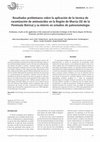
Geochronology is a critical issue in paleoseismological research. The aminoacid racemization tech... more Geochronology is a critical issue in paleoseismological research. The aminoacid racemization technique shows important advantages respect to more traditional dating methods; not just for the lower costs and promptness, also because the object to analyze is relatively frequent, in this study: terrestrial gastropods. Furthermore, the costs of the analysis are by far faster and cheaper compared to other dating techniques. Racemization results allow comparing the relative age from different sedimentary units from one trench to another. Additionally, the racemization technique can also be used as a geochronological tool, provided a calibration curve has been first obtained for the particular climate for the area and, ideally, for a particular genus. In this study we show the results obtained from the analysis of 40 samples of terrestrial gastropods from 7 different trenches located in the Murcia Region (SE Spain). Making use of the D/L ratio of aspartic acid we show the coherence found between relative stratigraphic ages and the racemization age. Finally, we show a provisional conversion equation between age of racemization, obtained from Torres et al. (1997) algorithm, and the likely age of the samples.

Springer eBooks, 2013
ABSTRACT The effectiveness of the stabilization measures, particularly deep drainage wells, have ... more ABSTRACT The effectiveness of the stabilization measures, particularly deep drainage wells, have been analysed in a complex landslide affecting a major motorway in Southern Spain. A complete failure analysis of this instability, named as the Diezma landslide, has been performed considering different steps: (1) The slope before and after the A-92 motorway construction; (2) The slope during the 2001 Diezma landslide; (3) The slope after the stabilisation measures; (4) The slope at the 2010 reactivation; (5) Possible future reactivation. The good performance of the drainage wells was verified successfully by means of electrical resistivity tomography cross-sections. The future stability of the Diezma landslide depends on the correct performance of the drainage systems after periods of heavy rain. In addition, the reactivation of the Diezma landslide is expected in the case that a low magnitude earthquake (Mw 4.0–5.0), relatively common in the study area, occurs close to the landslide location.
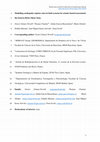
Engineering Geology, Feb 1, 2020
Earthquake surface fault ruptures can show very complex geometries and involve different faults s... more Earthquake surface fault ruptures can show very complex geometries and involve different faults simultaneously. Consequently, modern fault-based probabilistic seismic hazard assessments (PSHA) need to account for such complexities in order to achieve more realistic modellings that treat fault systems as a whole and consider the occurrence of earthquake ruptures as aleatory uncertainties. We use SHERIFS, a recent approach of modelling annual rates of complex multi-fault ruptures, to obtain system-level magnitude-frequency distributions (MFDs) for the Eastern Betics Shear Zone (EBSZ, Spain) considering four fault rupture hypotheses. We then analyze the consistency of each scenario based on data from the earthquake catalogue and paleoseismic studies. The definition of the different rupture hypotheses was discussed within the frame of Fault2SHA ESC working group and critical fault input data is extracted from previous published studies. The four rupture hypotheses are defined as incremental scenarios based on fault geometry and kinematics, with lengths varying from minimal fault sections to a rupture of nearly the whole system. The results suggest that multi-fault ruptures involving lengths up to single to several whole faults are consistent with the annual rates from both the instrumental catalogue and paleoseismic record. The method does not allow to completely discard any hypothesis, but it allows to weight the different models in a logic tree for seismic hazard assessment. The approach is revealed as a practical tool for obtaining fault-system MFDs and as a useful tool for highlighting limitations and uncertainties in geological and paleoseismic data to be assessed. This study aims to constitute a step forward in the consideration of complex multi-fault ruptures for future seismic hazard assessments in the region.

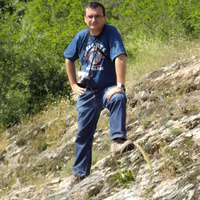








Uploads
Papers by Julian Garcia-Mayordomo